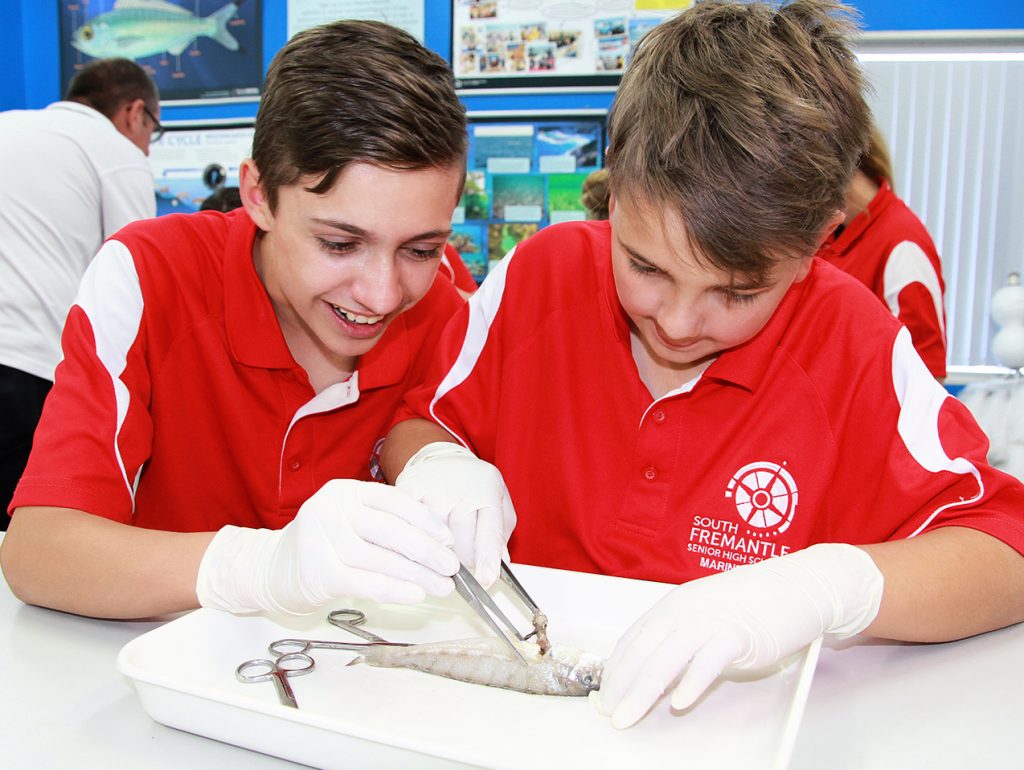In this fish dissection activity, students learn why dissection is an important tool in fisheries science and what information scientists gain from dissecting fish. Students will conduct a fish dissection to examine and identify the internal anatomy of a bony fish, as well as learn how these features enable the fish to survive.
The Department of Primary Industries and Regional Development is responsible for the sustainable management of Western Australia’s fisheries, to ensure that we have fish for the future. In this activity, students learn how fish dissections provide valuable research information that contributes to making informed management decisions.
Students will collect and record information about the general biology of their fish and complete their own fish dissection. They will extract the ear bones, or otoliths, from their fish, learn how to identify the sex of their fish and find out how research on fish gonads is vital in setting recreational fishing rules and regulations.
Note: This activity has a maximum of 60 students per day. Senior school students (years 11 & 12) receive one fish each and lower school students (years 10 and below) receive one fish per pair unless otherwise requested prior to the excursion date.
Cost: $8.00 per student
Activity Outline:
In the Fish Dissection activity, students will be given a brief presentation which explains the process of fish dissection and its importance to sustainable fisheries management. They will then observe a demonstration of a fish dissection before completing their own fish dissection and labelling a worksheet of the fish’s internal and external features.
Through the completion of this activity, students will be able to:
- Identify the internal and external features of a bony fish.
- Explain how fisheries scientist determine the sex of fish species and how research on fish gonads informs fisheries management decisions.
- Describe how fisheries scientists use age data, found in the fish’s otolith, along with length measurements to inform fisheries management decisions.
- Describe what a healthy fish population looks like in terms of its population structure and explain how fishing impact alters the fish’s population structure.
You may also wish to combine this activity with the Fish of Ages activity for a 1.5-hour session that is $8 per student.
Pre-excursion and post-excursion resources:
The information covered in this excursion can be found in the Fact Sheet: Fish Anatomy and Fact Sheet: Fish ageing, as well as the related resources below.
You can also use the Lesson: Fish Dissection or Lesson: Fish Dissection-Senior Secondary and their associated resources to lead a fish dissection in your own classroom.

